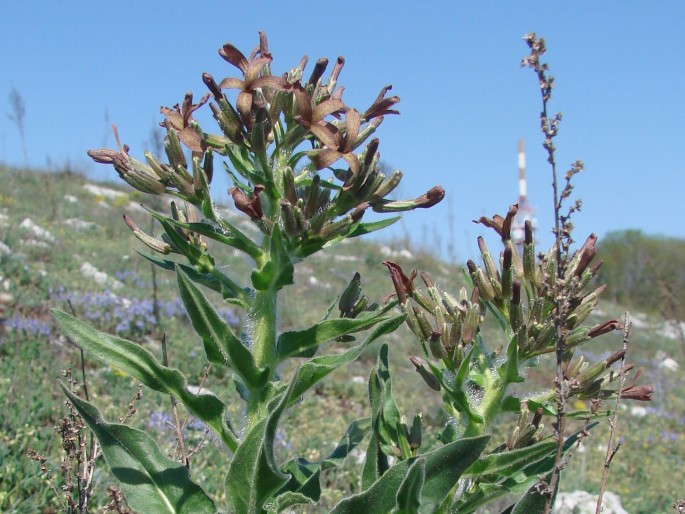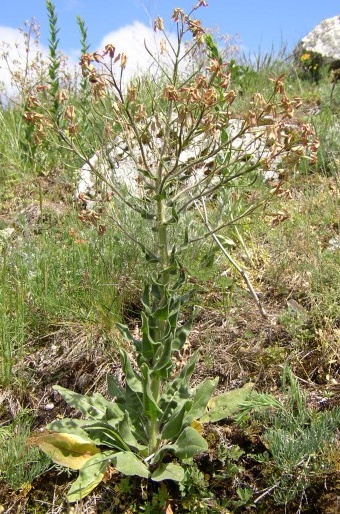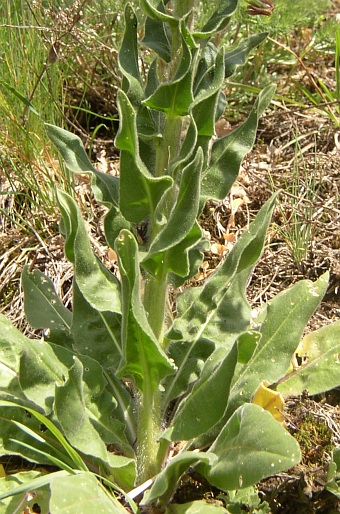Syn.: Deilosma tristis (L.) Spach, Kladnia tristis (L.) Schur, Hesperidium triste (L.) Beck, Hesperis desertorum Velen.
Family: Brassicaceae Burnett

Distribution: Southeastern part of Central Europe, eastward to the North Caucasus and the Volga Region, northward to the Pannonian part of southern Moravia.
Ecology: It grows on dry slopes, mainly on limestone, from lowlands to highlands. It blooms from May to June.

Description: Biennial to perennial herb with an erect and hairy stem, 25–50(–70) cm tall. Leaves ovate-lanceolate to lanceolate, entire to denticulate; cauline leaves subcordate. Sepals 9–15 mm, petals linear-lanceolate, 20–25(–30) mm, yellow to purplish. Fruit is a siliqua, 40–180 × 2.5–4.5 mm.
Threat and protection: It is an endangered species in Czechia and Slovakia.






These images were taken in Czechia, Moravia, Pavlovské vrchy, Děvín (26. 4. 2003, 16. 5. 2004, 22. 4. 2009).


